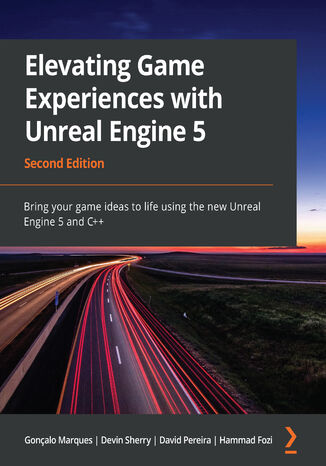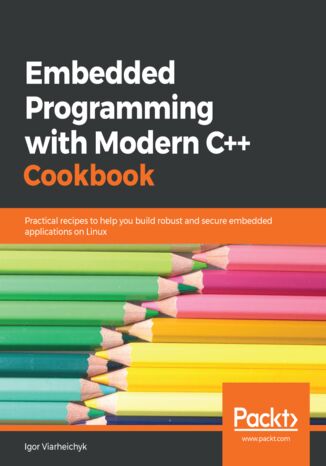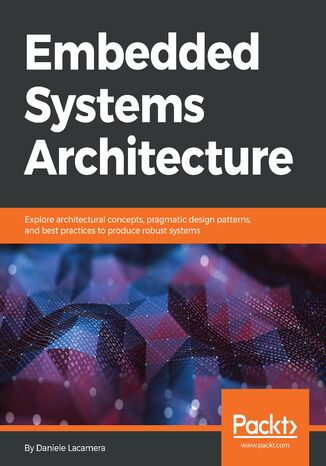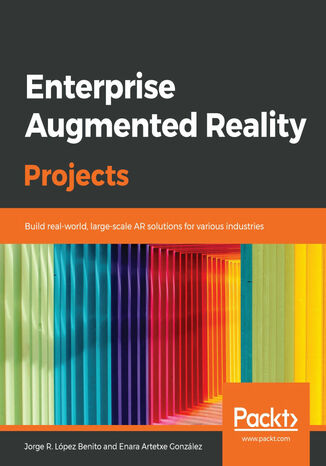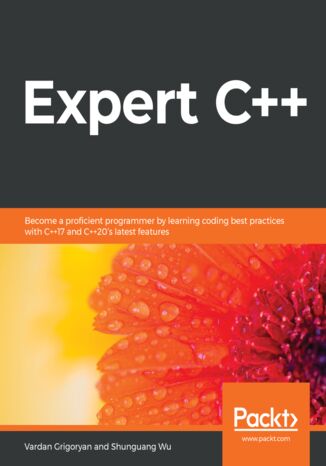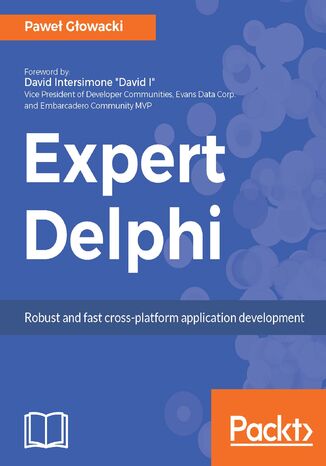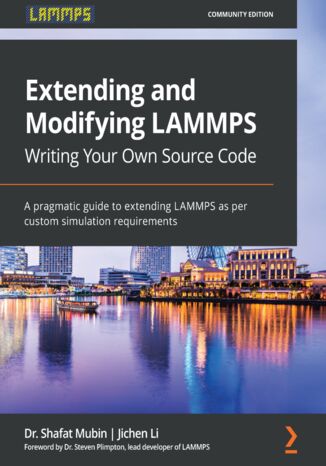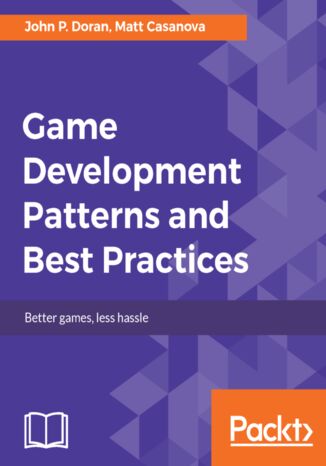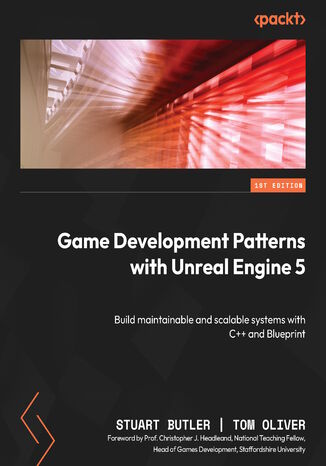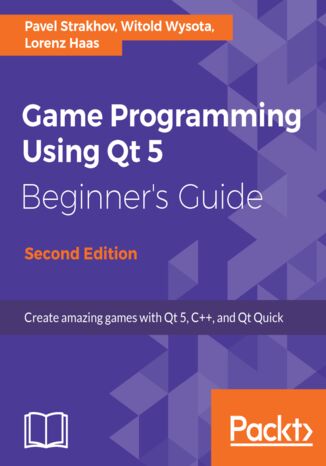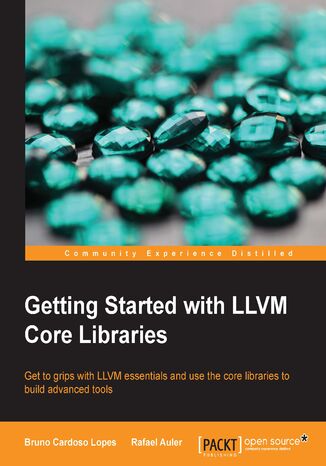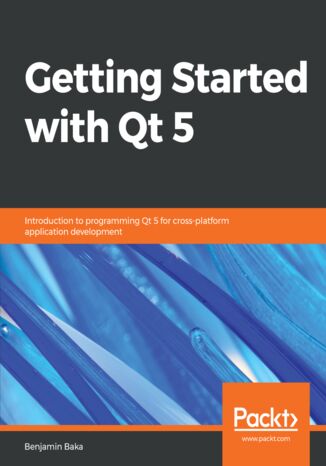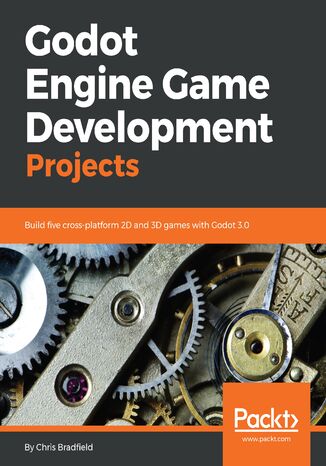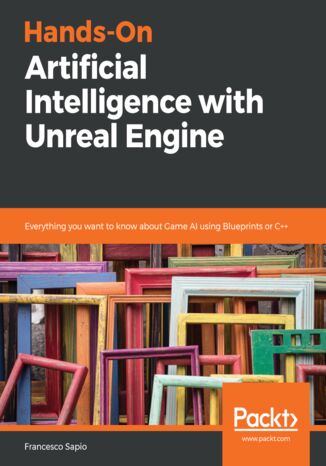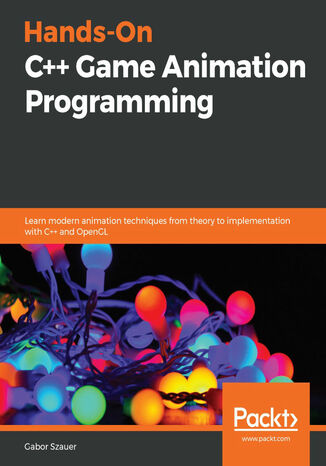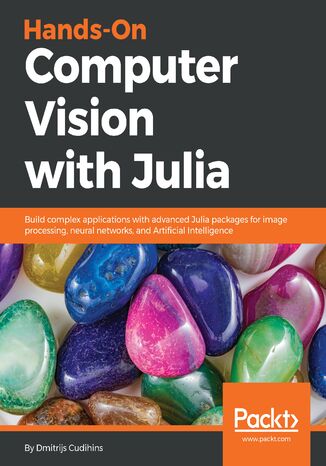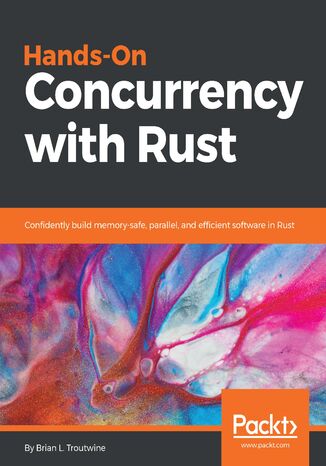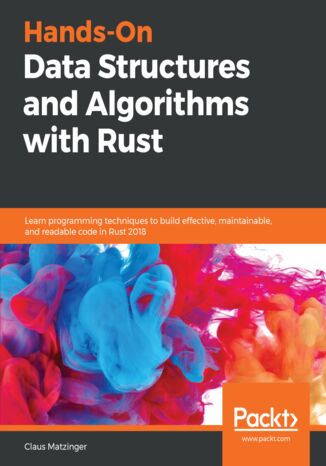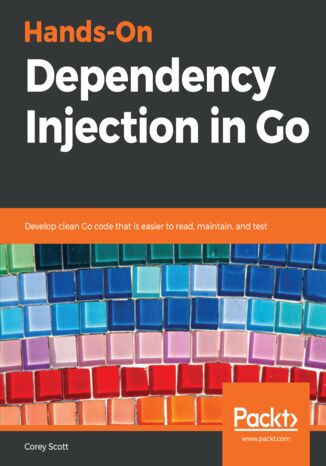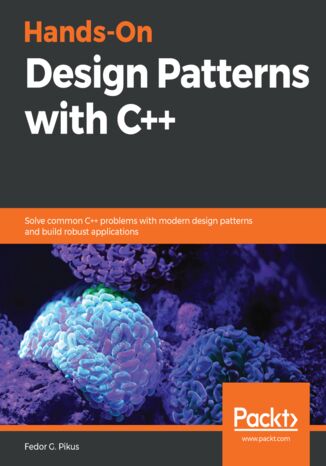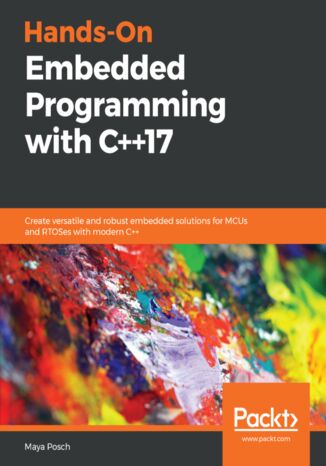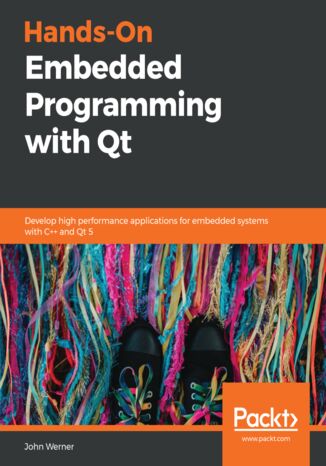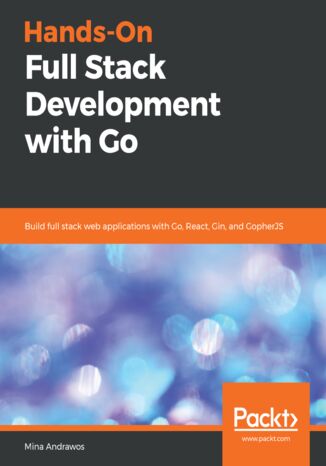Categories
Ebooks
-
Business and economy
- Bitcoin
- Businesswoman
- Coaching
- Controlling
- E-business
- Economy
- Finances
- Stocks and investments
- Personal competence
- Computer in the office
- Communication and negotiation
- Small company
- Marketing
- Motivation
- Multimedia trainings
- Real estate
- Persuasion and NLP
- Taxes
- Social policy
- Guides
- Presentations
- Leadership
- Public Relation
- Reports, analyses
- Secret
- Social Media
- Sales
- Start-up
- Your career
- Management
- Project management
- Human Resources
-
For children
-
For youth
-
Education
-
Encyclopedias, dictionaries
-
E-press
- Architektura i wnętrza
- Health and Safety
- Biznes i Ekonomia
- Home and garden
- E-business
- Ekonomia i finanse
- Esoterecism
- Finances
- Personal finance
- Business
- Photography
- Computer science
- HR & Payroll
- For women
- Computers, Excel
- Accounts
- Culture and literature
- Scientific and academic
- Environmental protection
- Opinion-forming
- Education
- Taxes
- Travelling
- Psychology
- Religion
- Agriculture
- Book and press market
- Transport and Spedition
- Healthand beauty
-
History
-
Computer science
- Office applications
- Data bases
- Bioinformatics
- IT business
- CAD/CAM
- Digital Lifestyle
- DTP
- Electronics
- Digital photography
- Computer graphics
- Games
- Hacking
- Hardware
- IT w ekonomii
- Scientific software package
- School textbooks
- Computer basics
- Programming
- Mobile programming
- Internet servers
- Computer networks
- Start-up
- Operational systems
- Artificial intelligence
- Technology for children
- Webmastering
-
Other
-
Foreign languages
-
Culture and art
-
School reading books
-
Literature
- Antology
- Ballade
- Biographies and autobiographies
- For adults
- Dramas
- Diaries, memoirs, letters
- Epic, epopee
- Essay
- Fantasy and science fiction
- Feuilletons
- Work of fiction
- Humour and satire
- Other
- Classical
- Crime fiction
- Non-fiction
- Fiction
- Mity i legendy
- Nobelists
- Novellas
- Moral
- Okultyzm i magia
- Short stories
- Memoirs
- Travelling
- Narrative poetry
- Poetry
- Politics
- Popular science
- Novel
- Historical novel
- Prose
- Adventure
- Journalism, publicism
- Reportage novels
- Romans i literatura obyczajowa
- Sensational
- Thriller, Horror
- Interviews and memoirs
-
Natural sciences
-
Social sciences
-
School textbooks
-
Popular science and academic
- Archeology
- Bibliotekoznawstwo
- Cinema studies
- Philology
- Polish philology
- Philosophy
- Finanse i bankowość
- Geography
- Economy
- Trade. World economy
- History and archeology
- History of art and architecture
- Cultural studies
- Linguistics
- Literary studies
- Logistics
- Maths
- Medicine
- Humanities
- Pedagogy
- Educational aids
- Popular science
- Other
- Psychology
- Sociology
- Theatre studies
- Theology
- Economic theories and teachings
- Transport i spedycja
- Physical education
- Zarządzanie i marketing
-
Guides
-
Game guides
-
Professional and specialist guides
-
Law
- Health and Safety
- History
- Road Code. Driving license
- Law studies
- Healthcare
- General. Compendium of knowledge
- Academic textbooks
- Other
- Construction and local law
- Civil law
- Financial law
- Economic law
- Economic and trade law
- Criminal law
- Criminal law. Criminal offenses. Criminology
- International law
- International law
- Health care law
- Educational law
- Tax law
- Labor and social security law
- Public, constitutional and administrative law
- Family and Guardianship Code
- agricultural law
- Social law, labour law
- European Union law
- Industry
- Agricultural and environmental
- Dictionaries and encyclopedia
- Public procurement
- Management
-
Tourist guides and travel
- Africa
- Albums
- Southern America
- North and Central America
- Australia, New Zealand, Oceania
- Austria
- Asia
- Balkans
- Middle East
- Bulgary
- China
- Croatia
- The Czech Republic
- Denmark
- Egipt
- Estonia
- Europe
- France
- Mountains
- Greece
- Spain
- Holand
- Iceland
- Lithuania
- Latvia
- Mapy, Plany miast, Atlasy
- Mini travel guides
- Germany
- Norway
- Active travelling
- Poland
- Portugal
- Other
- Przewodniki po hotelach i restauracjach
- Russia
- Romania
- Slovakia
- Slovenia
- Switzerland
- Sweden
- World
- Turkey
- Ukraine
- Hungary
- Great Britain
- Italy
-
Psychology
- Philosophy of life
- Kompetencje psychospołeczne
- Interpersonal communication
- Mindfulness
- General
- Persuasion and NLP
- Academic psychology
- Psychology of soul and mind
- Work psychology
- Relacje i związki
- Parenting and children psychology
- Problem solving
- Intellectual growth
- Secret
- Sexapeal
- Seduction
- Appearance and image
- Philosophy of life
-
Religion
-
Sport, fitness, diets
-
Technology and mechanics
Audiobooks
-
Business and economy
- Bitcoin
- Businesswoman
- Coaching
- Controlling
- E-business
- Economy
- Finances
- Stocks and investments
- Personal competence
- Communication and negotiation
- Small company
- Marketing
- Motivation
- Real estate
- Persuasion and NLP
- Taxes
- Social policy
- Guides
- Presentations
- Leadership
- Public Relation
- Secret
- Social Media
- Sales
- Start-up
- Your career
- Management
- Project management
- Human Resources
-
For children
-
For youth
-
Education
-
Encyclopedias, dictionaries
-
E-press
-
History
-
Computer science
-
Other
-
Foreign languages
-
Culture and art
-
School reading books
-
Literature
- Antology
- Ballade
- Biographies and autobiographies
- For adults
- Dramas
- Diaries, memoirs, letters
- Epic, epopee
- Essay
- Fantasy and science fiction
- Feuilletons
- Work of fiction
- Humour and satire
- Other
- Classical
- Crime fiction
- Non-fiction
- Fiction
- Mity i legendy
- Nobelists
- Novellas
- Moral
- Okultyzm i magia
- Short stories
- Memoirs
- Travelling
- Poetry
- Politics
- Popular science
- Novel
- Historical novel
- Prose
- Adventure
- Journalism, publicism
- Reportage novels
- Romans i literatura obyczajowa
- Sensational
- Thriller, Horror
- Interviews and memoirs
-
Natural sciences
-
Social sciences
-
Popular science and academic
-
Guides
-
Professional and specialist guides
-
Law
-
Tourist guides and travel
-
Psychology
- Philosophy of life
- Interpersonal communication
- Mindfulness
- General
- Persuasion and NLP
- Academic psychology
- Psychology of soul and mind
- Work psychology
- Relacje i związki
- Parenting and children psychology
- Problem solving
- Intellectual growth
- Secret
- Sexapeal
- Seduction
- Appearance and image
- Philosophy of life
-
Religion
-
Sport, fitness, diets
-
Technology and mechanics
Videocourses
-
Data bases
-
Big Data
-
Biznes, ekonomia i marketing
-
Cybersecurity
-
Data Science
-
DevOps
-
For children
-
Electronics
-
Graphics/Video/CAX
-
Games
-
Microsoft Office
-
Development tools
-
Programming
-
Personal growth
-
Computer networks
-
Operational systems
-
Software testing
-
Mobile devices
-
UX/UI
-
Web development
-
Management
Podcasts
- Ebooks
- Programming
- C++
C++
Gonçalo Marques, Devin Sherry, David Pereira, Hammad Fozi
Immerse yourself in the Unreal game projects with this book, written by four highly experienced industry professionals with many years of combined experience with Unreal Engine. Elevating Game Experiences with Unreal Engine 5 will walk you through the latest version of Unreal Engine by helping you get hands-on with the game creation projects.The book starts with an introduction to the Unreal Editor and key concepts such as actors, blueprints, animations, inheritance, and player input. You'll then move on to the first of three projects, building a dodgeball game, where you'll learn the concepts of line traces, collisions, projectiles, user interface, and sound effects. You’ll also discover how to combine these concepts to showcase your new skills. The second project, a side-scroller game, will help you implement concepts such as animation blending, enemy AI, spawning objects, and collectibles. And finally, you'll cover the key concepts in creating a multiplayer environment as you work on the third project, an FPS game.By the end of this Unreal Engine book, you'll have a broad understanding of how to use the tools that the game engine provides to start building your own games.
Developing applications for embedded systems may seem like a daunting task as developers face challenges related to limited memory, high power consumption, and maintaining real-time responses. This book is a collection of practical examples to explain how to develop applications for embedded boards and overcome the challenges that you may encounter while developing.The book will start with an introduction to embedded systems and how to set up the development environment. By teaching you to build your first embedded application, the book will help you progress from the basics to more complex concepts, such as debugging, logging, and profiling. Moving ahead, you will learn how to use specialized memory and custom allocators. From here, you will delve into recipes that will teach you how to work with the C++ memory model, atomic variables, and synchronization. The book will then take you through recipes on inter-process communication, data serialization, and timers. Finally, you will cover topics such as error handling and guidelines for real-time systems and safety-critical systems.By the end of this book, you will have become proficient in building robust and secure embedded applications with C++.
Embedded systems are self-contained devices with a dedicated purpose. We come across a variety of fields of applications for embedded systems in industries such as automotive, telecommunications, healthcare and consumer electronics, just to name a few.Embedded Systems Architecture begins with a bird's eye view of embedded development and how it differs from the other systems that you may be familiar with. You will first be guided to set up an optimal development environment, then move on to software tools and methodologies to improve the work flow. You will explore the boot-up mechanisms and the memory management strategies typical of a real-time embedded system. Through the analysis of the programming interface of the reference microcontroller, you'll look at the implementation of the features and the device drivers. Next, you'll learn about the techniques used to reduce power consumption. Then you will be introduced to the technologies, protocols and security aspects related to integrating the system into IoT solutions.By the end of the book, you will have explored various aspects of embedded architecture, including task synchronization in a multi-threading environment, and the safety models adopted by modern real-time operating systems.
Jorge R. López Benito, Enara Artetxe González
Augmented reality (AR) is expanding its scope from just being used in mobile and game applications to enterprise. Different industries are using AR to enhance assembly line visualization, guide operators performing difficult tasks, attract more customers, and even improve training techniques. In this book, you'll gain comprehensive insights into different aspects of developing AR-based apps for six different enterprise sectors, focusing on market needs and choosing the most suitable tool in each case.You'll delve into the basics of Unity and get familiar with Unity assets, materials, and resources, which will help you build a strong foundation for working on the different AR projects covered in the book. You'll build real-world projects for various industries such as marketing, retail, and automation in a step-by-step manner. This will give you hands-on experience in developing your own industrial AR apps. While building the projects, you'll explore various AR frameworks used in the enterprise environment such as Vuforia, EasyAR, ARCore, and ARKit, and understand how they can be used by themselves or integrated into the Unity 3D engine to create AR markers, 3D models, and components of an AR app.By the end of this book, you'll be well versed in using different commercial AR frameworks as well as Unity for building robust AR projects.
Vardan Grigoryan, Shunguang Wu
C++ has evolved over the years and the latest release – C++20 – is now available. Since C++11, C++ has been constantly enhancing the language feature set. With the new version, you’ll explore an array of features such as concepts, modules, ranges, and coroutines. This book will be your guide to learning the intricacies of the language, techniques, C++ tools, and the new features introduced in C++20, while also helping you apply these when building modern and resilient software.You’ll start by exploring the latest features of C++, and then move on to advanced techniques such as multithreading, concurrency, debugging, monitoring, and high-performance programming. The book will delve into object-oriented programming principles and the C++ Standard Template Library, and even show you how to create custom templates. After this, you’ll learn about different approaches such as test-driven development (TDD), behavior-driven development (BDD), and domain-driven design (DDD), before taking a look at the coding best practices and design patterns essential for building professional-grade applications. Toward the end of the book, you will gain useful insights into the recent C++ advancements in AI and machine learning.By the end of this C++ programming book, you’ll have gained expertise in real-world application development, including the process of designing complex software.
Expert Delphi. Robust and fast cross-platform application development
Delphi is the most powerful Object Pascal IDE and component library for cross-platform native app development. It enables building natively compiled, blazingly fast apps for all major platforms including Android, iOS, Windows, Mac, and Linux.If you want to build server-side applications, create web services, and have clear GUIs for your project, then this book is for you. The book begins with a basic primer on Delphi helping you get accustomed to the IDE and the Object Pascal language and will then quickly move on to advanced-level concepts. Through this book, we’ll help you understand the architecture of applications and will teach you the important concepts of the FireMonkey library, show you how to build server-side services, and enable you to interact with the Internet of Things. Towards the end, you will learn to integrate your app with various web services and deploy them. By the end of the book, you will be able to build powerful, cross-platform, native apps for iOS and Android with a single code base.
Dr. Shafat Mubin, Jichen Li, Dr. Steven Plimpton
LAMMPS is one of the most widely used tools for running simulations for research in molecular dynamics. While the tool itself is fairly easy to use, more often than not you’ll need to customize it to meet your specific simulation requirements. Extending and Modifying LAMMPS bridges this learning gap and helps you achieve this by writing custom code to add new features to LAMMPS source code. Written by ardent supporters of LAMMPS, this practical guide will enable you to extend the capabilities of LAMMPS with the help of step-by-step explanations of essential concepts, practical examples, and self-assessment questions.This LAMMPS book provides a hands-on approach to implementing associated methodologies that will get you up and running and productive in no time. You’ll begin with a short introduction to the internal mechanisms of LAMMPS, and gradually transition to an overview of the source code along with a tutorial on modifying it. As you advance, you’ll understand the structure, syntax, and organization of LAMMPS source code, and be able to write your own source code extensions to LAMMPS that implement features beyond the ones available in standard downloadable versions.By the end of this book, you’ll have learned how to add your own extensions and modifications to the LAMMPS source code that can implement features that suit your simulation requirements.
Game Development Patterns and Best Practices. Better games, less hassle
You’ve learned how to program, and you’ve probably created some simple games at some point, but now you want to build larger projects and find out how to resolve your problems. So instead of a coder, you might now want to think like a game developer or software engineer. To organize your code well, you need certain tools to do so, and that’s what this book is all about. You will learn techniques to code quickly and correctly, while ensuring your code is modular and easily understandable.To begin, we will start with the core game programming patterns, but not the usual way. We will take the use case strategy with this book. We will take an AAA standard game and show you the hurdles at multiple stages of development. Similarly, various use cases are used to showcase other patterns such as the adapter pattern, prototype pattern, flyweight pattern, and observer pattern. Lastly, we’ll go over some tips and tricks on how to refactor your code to remove common code smells and make it easier for others to work with you. By the end of the book you will be proficient in using the most popular and frequently used patterns with the best practices.
Stuart Butler, Tom Oliver, Christopher J. Headleand
Design patterns serve as a toolkit of techniques and practices that enable you to write code that’s not only faster, but also more manageable. With this book, you’ll explore a range of design patterns and learn how to apply them to projects developed in Unreal Engine 5.You’ll begin by delving into the foundational principles of coding and develop a solid understanding of the concepts, challenges, and benefits of using patterns in your code. As you progress, you’ll identify patterns that are woven into the core of Unreal Engine 5 such as Double Buffer, Flyweight, and Spatial Partitioning, followed by some of the existing tool sets that embody patterns in their design and usage including Component, Behavior Tree, and Update.In the next section of the book, you’ll start developing a series of gameplay use cases in C++ to implement a variety of design patterns such as Interface and Event-based Observers to build a decoupled communications hierarchy. You’ll also work with Singleton, Command, and State, along with Behavioral Patterns, Template, Subclass Sandbox, and Type Object. The final section focuses on using design patterns for optimization, covering Dirty Flag, Data Locality, and Object Pooling.By the end, you’ll be proficient in designing systems with the perfect C++/Blueprint blend for maintainable and scalable systems.
Qt is the leading cross-platform toolkit for all significant desktop, mobile, and embedded platforms and is becoming popular by the day, especially on mobile and embedded devices. It's a powerful tool that perfectly fits the needs of game developers. This book will help you learn the basics of Qt and will equip you with the necessary toolsets to build apps and games.The book begins by how to create an application and prepare a working environment for both desktop and mobile platforms. You will learn how to use built-in Qt widgets and Form Editor to create a GUI application and then learn the basics of creating graphical interfaces and Qt's core concepts.Further, you'll learn to enrich your games by implementing network connectivity and employing scripting. You will learn about Qt's capabilities for handling strings and files, data storage, and serialization.Moving on, you will learn about the new Qt Gamepad module and how to add it in your game and then delve into OpenGL and Vulcan, and how it can be used in Qt applications to implement hardware-accelerated 2D and 3D graphics. You will then explore various facets of Qt Quick: how it can be used in games to add game logic, add game physics, and build astonishing UIs for your games. By the end of this book, you will have developed the skillset to develop interesting games with Qt.
Qt is a cross-platform application framework and widget toolkit that is used to create GUI applications that can run on different hardware and operating systems. The main aim of this book is to introduce Qt to the reader. Through the use of simple examples, we will walk you through building blocks without focusing too much on theory.Qt is a popular tool that can be used for building a variety of applications, such as web browsers, media players such as VLC, and Adobe Photoshop. Following Qt installation and setup, the book dives straight into helping you create your first application.You will be introduced to Widgets, Qt's interface building block, and the many varieties that are available for creating GUIs. Next, Qt's core concept of signals and slots are well illustrated with sufficient examples. The book further teaches you how to create custom widgets, signals and slots, and how to communicate useful information via dialog boxes. To cap everything off, you will be taken through writing applications that can connect to databases in order to persist data.By the end of the book, you should be well equipped to start creating your own Qt applications and confident enough to pick up more advanced Qt techniques and materials to hone your skills.
Godot Engine Game Development Projects. Build five cross-platform 2D and 3D games with Godot 3.0
Godot Engine Game Development Projects is an introduction to the Godot game engine and its new 3.0 version. Godot 3.0 brings a large number of new features and capabilities that make it a strong alternative to expensive commercial game engines. For beginners, Godot offers a friendly way to learn game development techniques, while for experienced developers it is a powerful, customizable tool that can bring your visions to life.This book consists of five projects that will help developers achieve a sound understanding of the engine when it comes to building games.Game development is complex and involves a wide spectrum of knowledge and skills. This book can help you build on your foundation level skills by showing you how to create a number of small-scale game projects. Along the way, you will learn how Godot works and discover important game development techniques that you can apply to your projects.Using a straightforward, step-by-step approach and practical examples, the book will take you from the absolute basics through to sophisticated game physics, animations, and other techniques. Upon completing the final project, you will have a strong foundation for future success with Godot 3.0.
Learning how to apply artificial intelligence ( AI ) is crucial and can take the fun factor to the next level, whether you're developing a traditional, educational, or any other kind of game. If you want to use AI to extend the life of your games and make them challenging and more interesting, this book is for you.The book starts by breaking down AI into simple concepts to get a fundamental understanding of it. Using a variety of examples, you will work through actual implementations designed to highlight key concepts and features related to game AI in UE4. You will learn to work through the built-in AI framework in order to build believable characters for every game genre (including RPG, Strategic, Platform, FPS, Simulation, Arcade, and Educational). You will learn to configure the Navigation, Environmental Querying, and Perception systems for your AI agents and couple these with Behavior Trees, all accompanied with practical examples. You will also explore how the engine handles dynamic crowds. In the concluding chapters, you will learn how to profile, visualize, and debug your AI systems to correct the AI logic and increase performance.By the end of the book, your AI knowledge of the built-in AI system in Unreal will be deep and comprehensive, allowing you to build powerful AI agents within your projects.
Animation is one of the most important parts of any game. Modern animation systems work directly with track-driven animation and provide support for advanced techniques such as inverse kinematics (IK), blend trees, and dual quaternion skinning.This book will walk you through everything you need to get an optimized, production-ready animation system up and running, and contains all the code required to build the animation system. You’ll start by learning the basic principles, and then delve into the core topics of animation programming by building a curve-based skinned animation system. You’ll implement different skinning techniques and explore advanced animation topics such as IK, animation blending, dual quaternion skinning, and crowd rendering. The animation system you will build following this book can be easily integrated into your next game development project. The book is intended to be read from start to finish, although each chapter is self-contained and can be read independently as well.By the end of this book, you’ll have implemented a modern animation system and got to grips with optimization concepts and advanced animation techniques.
Hands-On Computer Vision with Julia is a thorough guide for developers who want to get started with building computer vision applications using Julia. Julia is well suited to image processing because it’s easy to use and lets you write easy-to-compile and efficient machine code..This book begins by introducing you to Julia's image processing libraries such as Images.jl and ImageCore.jl. You’ll get to grips with analyzing and transforming images using JuliaImages; some of the techniques discussed include enhancing and adjusting images. As you make your way through the chapters, you’ll learn how to classify images, cluster them, and apply neural networks to solve computer vision problems. In the concluding chapters, you will explore OpenCV applications to perform real-time computer vision analysis, for example, face detection and object tracking. You will also understand Julia's interaction with Tesseract to perform optical character recognition and build an application that brings together all the techniques we introduced previously to consolidate the concepts learned.By end of the book, you will have understood how to utilize various Julia packages and a few open source libraries such as Tesseract and OpenCV to solve computer vision problems with ease.
Most programming languages can really complicate things, especially with regard to unsafe memory access. The burden on you, the programmer, lies across two domains: understanding the modern machine and your language's pain-points. This book will teach you to how to manage program performance on modern machines and build fast, memory-safe, and concurrent software in Rust. It starts with the fundamentals of Rust and discusses machine architecture concepts. You will be taken through ways to measure and improve the performance of Rust code systematically and how to write collections with confidence. You will learn about the Sync and Send traits applied to threads, and coordinate thread execution with locks, atomic primitives, data-parallelism, and more.The book will show you how to efficiently embed Rust in C++ code and explore the functionalities of various crates for multithreaded applications. It explores implementations in depth. You will know how a mutex works and build several yourself. You will master radically different approaches that exist in the ecosystem for structuring and managing high-scale systems. By the end of the book, you will feel comfortable with designing safe, consistent, parallel, and high-performance applications in Rust.
Rust has come a long way and is now utilized in several contexts. Its key strengths are its software infrastructure and resource-constrained applications, including desktop applications, servers, and performance-critical applications, not forgetting its importance in systems' programming. This book will be your guide as it takes you through implementing classic data structures and algorithms in Rust, helping you to get up and running as a confident Rust programmer. The book begins with an introduction to Rust data structures and algorithms, while also covering essential language constructs. You will learn how to store data using linked lists, arrays, stacks, and queues. You will also learn how to implement sorting and searching algorithms. You will learn how to attain high performance by implementing algorithms to string data types and implement hash structures in algorithm design. The book will examine algorithm analysis, including Brute Force algorithms, Greedy algorithms, Divide and Conquer algorithms, Dynamic Programming, and Backtracking. By the end of the book, you will have learned how to build components that are easy to understand, debug, and use in different applications.
Hands-On Dependency Injection in Go takes you on a journey, teaching you about refactoring existing code to adopt dependency injection (DI) using various methods available in Go.Of the six methods introduced in this book, some are conventional, such as constructor or method injection, and some unconventional, such as just-in-time or config injection. Each method is explained in detail, focusing on their strengths and weaknesses, and is followed with a step-by-step example of how to apply it. With plenty of examples, you will learn how to leverage DI to transform code into something simple and flexible. You will also discover how to generate and leverage the dependency graph to spot and eliminate issues. Throughout the book, you will learn to leverage DI in combination with test stubs and mocks to test otherwise tricky or impossible scenarios.Hands-On Dependency Injection in Go takes a pragmatic approach and focuses heavily on the code, user experience, and how to achieve long-term benefits through incremental changes.By the end of this book, you will have produced clean code that’s easy to test.
C++ is a general-purpose programming language designed with the goals of efficiency, performance, and flexibility in mind. Design patterns are commonly accepted solutions to well-recognized design problems. In essence, they are a library of reusable components, only for software architecture, and not for a concrete implementation.The focus of this book is on the design patterns that naturally lend themselves to the needs of a C++ programmer, and on the patterns that uniquely benefit from the features of C++, in particular, the generic programming. Armed with the knowledge of these patterns, you will spend less time searching for a solution to a common problem and be familiar with the solutions developed from experience, as well as their advantages and drawbacks. The other use of design patterns is as a concise and an efficient way to communicate. A pattern is a familiar and instantly recognizable solution to specific problem; through its use, sometimes with a single line of code, we can convey a considerable amount of information. The code conveys: This is the problem we are facing, these are additional considerations that are most important in our case; hence, the following well-known solution was chosen.By the end of this book, you will have gained a comprehensive understanding of design patterns to create robust, reusable, and maintainable code.
C++ is a great choice for embedded development, most notably, because it does not add any bloat, extends maintainability, and offers many advantages over different programming languages. Hands-On Embedded Programming with C++17 will show you how C++ can be used to build robust and concurrent systems that leverage the available hardware resources.Starting with a primer on embedded programming and the latest features of C++17, the book takes you through various facets of good programming. You’ll learn how to use the concurrency, memory management, and functional programming features of C++ to build embedded systems. You will understand how to integrate your systems with external peripherals and efficient ways of working with drivers. This book will also guide you in testing and optimizing code for better performance and implementing useful design patterns. As an additional benefit, you will see how to work with Qt, the popular GUI library used for building embedded systems.By the end of the book, you will have gained the confidence to use C++ for embedded programming.
Qt is an open source toolkit suitable for cross-platform and embedded application development. This book uses inductive teaching to help you learn how to create applications for embedded and Internet of Things (IoT) devices with Qt 5.You’ll start by learning to develop your very first application with Qt. Next, you’ll build on the first application by understanding new concepts through hands-on projects and written text. Each project will introduce new features that will help you transform your basic first project into a connected IoT application running on embedded hardware. In addition to gaining practical experience in developing an embedded Qt project, you will also gain valuable insights into best practices for Qt development and explore advanced techniques for testing, debugging, and monitoring the performance of Qt applications. The examples and projects covered throughout the book can be run both locally and on an embedded platform.By the end of this book, you will have the skills you need to use Qt 5 to confidently develop modern embedded applications.
The Go programming language has been rapidly adopted by developers for building web applications. With its impressive performance and ease of development, Go enjoys the support of a wide variety of open source frameworks, for building scalable and high-performant web services and apps. Hands-On Full Stack Development with Go is a comprehensive guide that covers all aspects of full stack development with Go.This clearly written, example-rich book begins with a practical exposure to Go development and moves on to build a frontend with the popular React framework. From there, you will build RESTful web APIs utilizing the Gin framework. After that, we will dive deeper into important software backend concepts, such as connecting to the database via an ORM, designing routes for your services, securing your services, and even charging credit cards via the popular Stripe API. We will also cover how to test, and benchmark your applications efficiently in a production environment. In the concluding chapters, we will cover isomorphic developments in pure Go by learning about GopherJS. As you progress through the book, you'll gradually build a musical instrument online store application from scratch.By the end of the book, you will be confident in taking on full stack web applications in Go.
Functional programming allows developers to divide programs into smaller, reusable components that ease the creation, testing, and maintenance of software as a whole. Combined with the power of Rust, you can develop robust and scalable applications that fulfill modern day software requirements. This book will help you discover all the Rust features that can be used to build software in a functional way.We begin with a brief comparison of the functional and object-oriented approach to different problems and patterns. We then quickly look at the patterns of control flow, data the abstractions of these unique to functional programming. The next part covers how to create functional apps in Rust; mutability and ownership, which are exclusive to Rust, are also discussed. Pure functions are examined next and you'll master closures, their various types, and currying. We also look at implementing concurrency through functional design principles and metaprogramming using macros. Finally, we look at best practices for debugging and optimization. By the end of the book, you will be familiar with the functional approach of programming and will be able to use these techniques on a daily basis.

